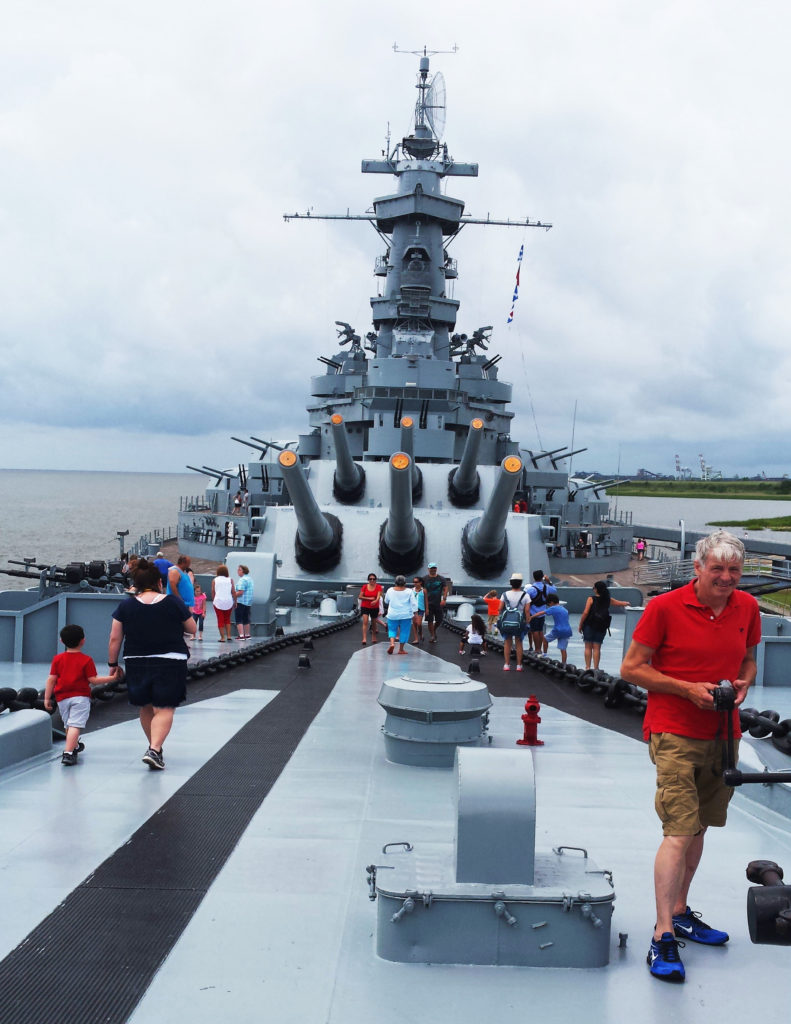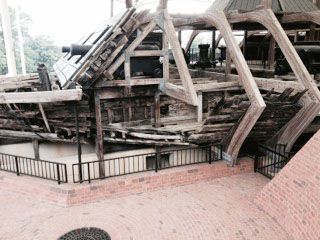Mobile and Vicksburg
The two sets of three 16” guns comprising the forward batteries of the WWII battleship , USS Alabama, fired 6-foot shells, the height of a man. These shells could go 20 miles for coming up from deep below would be 9 bags of gunpowder to explode each shell out its barrel.

These big gun foundations go down through the ship to its keel in 20 foot diameter cylindrical tubes surrounded by 4 foot thick concrete and steel . Outside these encasements, as you walk the perimeter of these very big trees on three levels you are joined by sentinels lining the wall: the huge bullets ready to rein death and destruction.
Actually, these shells were of limited use and best suited for shoreside bombardment. Once the German U-boat menace in the North Atlantic had been erased by SONAR – see you under, and then RADAR – see you over, there was no more night surfacing for subs to recharge batteries. The Battle of the Atlantic had turned in the Allies favor.
WWII quickly became a war of the skies, and battleships accompanied carrier groups to soften up shore emplacements where necessary but also with their smaller guns to fight off aerial attacks.
The first significant aerial assault was the 1940 Battle of Britain with the German Luftwaffe doing great damage to British cities. It ended after overwhelming destructive power was unleased from the skies with the firebombing of German and Japanese cities then the A-bombs dropped on Hiroshima and Nagasaki.
And so the city of Mobile, Alabama lives proud of its seafaring history. But 100 years prior up the Mississippi, “The Gibralter of the South,” Vicksburg, was fighting its brothers from the North in Ironclads. As with the strategic location of the Hudson River during the Revolutionary War, the holder of this river would win the Civil War. Yet, strong as these warships were for their time and regardless of the fact that they could sink any vessel that had preceeded them, its unlikely they would have held up against the USS Alabama.


How about a photo of you two inside rover as you hurtle down the roads to new adventure?